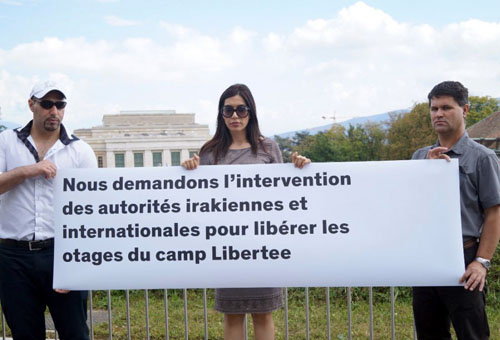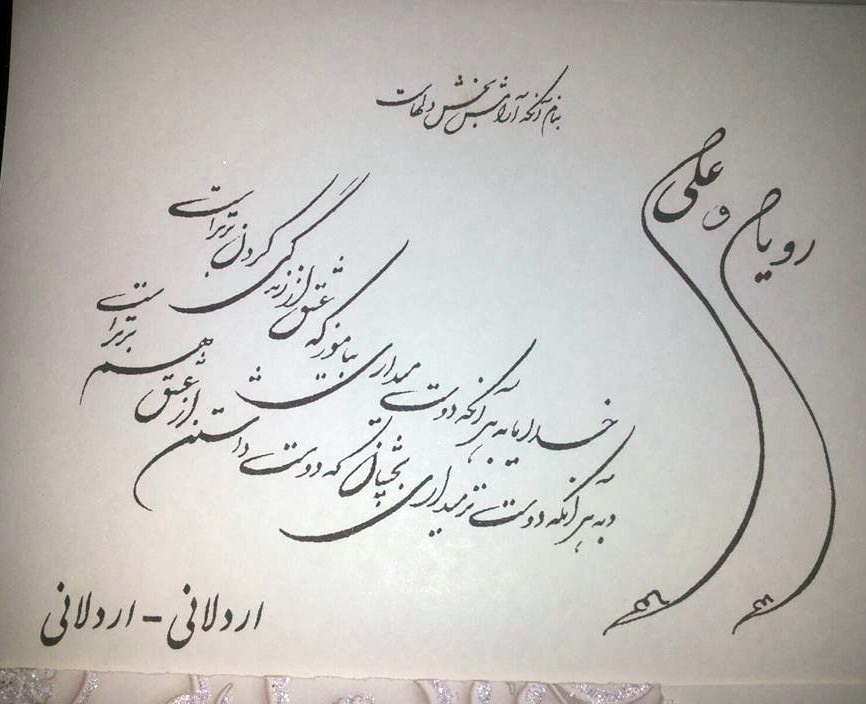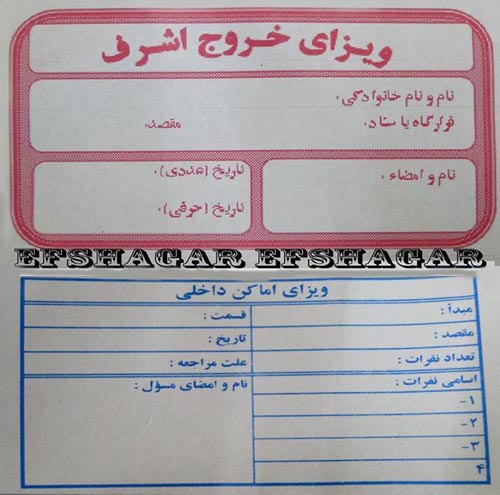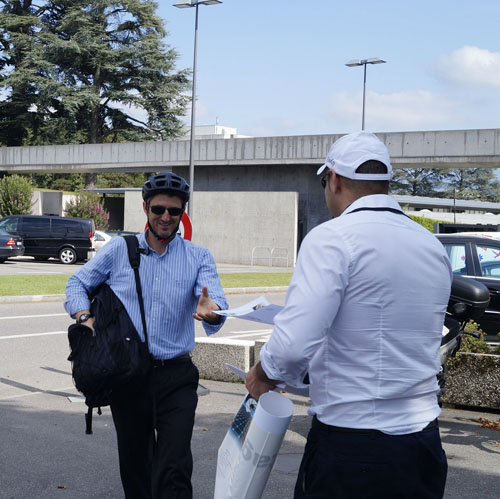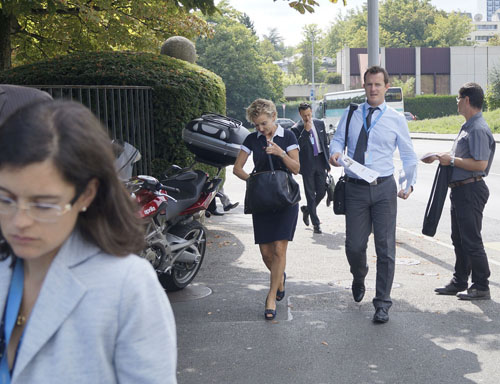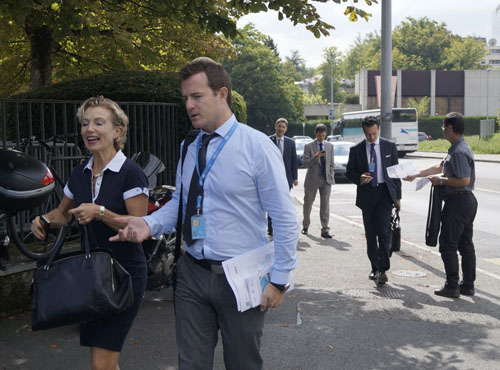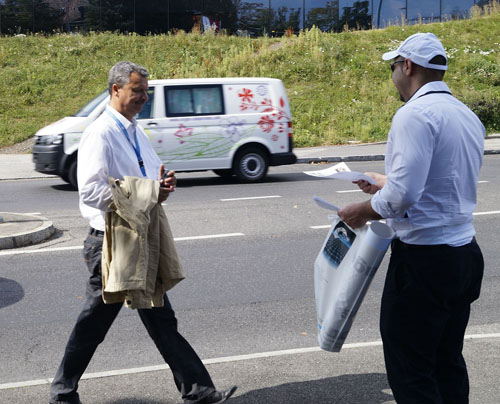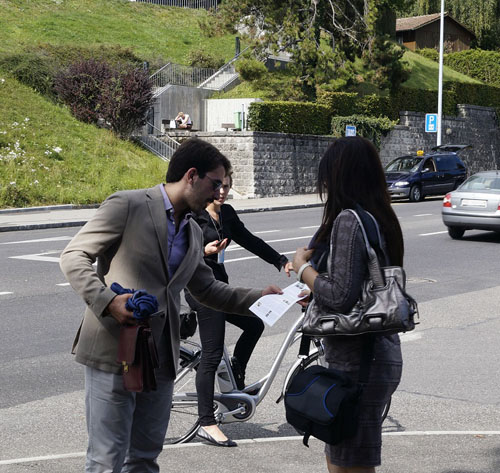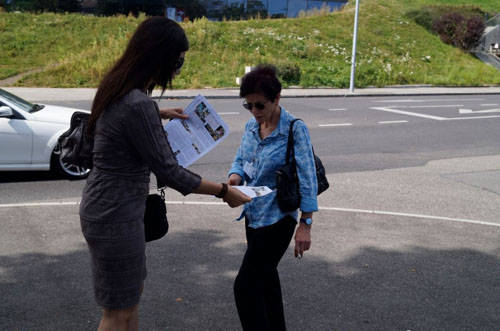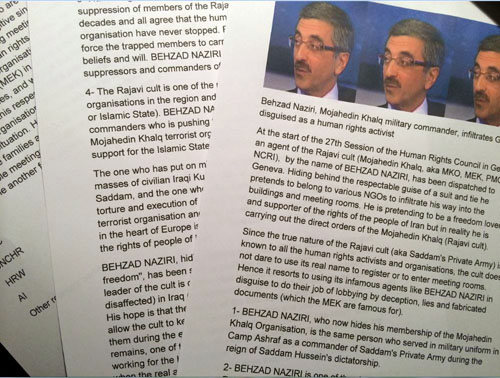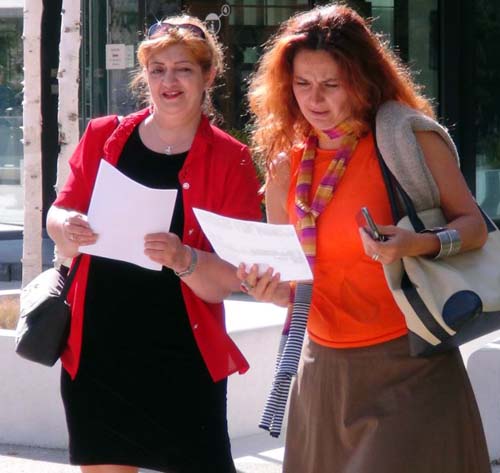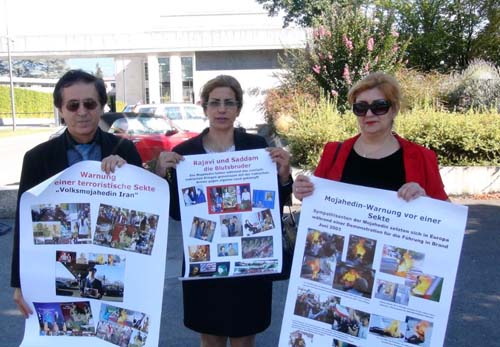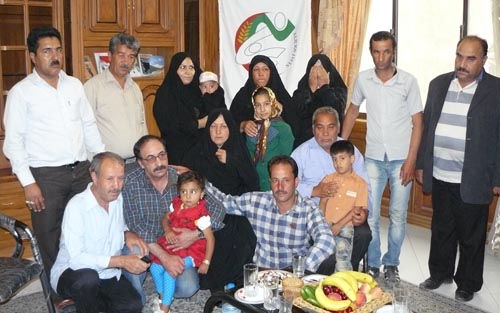Members and representatives of Setaregan Association (Switzerland), gathered in Geneva for the 27th Session of the UN Human Rights Council (UNHRC). The Association used leaflets and individual explanations to inform delegates to the Conference about the human rights abuses practiced by the Rajavis against members of their own organisation, the Mojahedin Khalq. Representatives of Setaregan, including Nasrin Ebrahimi, were able to relate personal testimony to inform delegates, a move which was highly effective.
